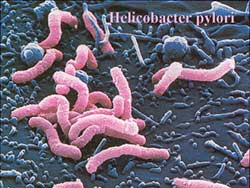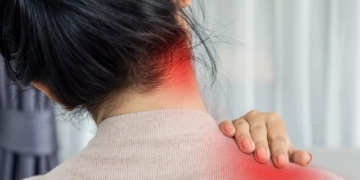Chronic Gastric and Duodenal Ulcers in Children Are Often Caused by H. pylori Bacteria. Children Are at High Risk for Complications Such as Gastrointestinal Bleeding and Ulcer Perforation…
 |
|
H. pylori Bacteria (Image: fmed) |
The condition is most commonly seen in children aged 7 to 13 years. H. pylori can be transmitted via oral-oral routes (often seen in children living in households with individuals suffering from gastric ulcers), as well as fecal-oral routes (due to poor hygiene practices, environmental pollution, and contaminated water sources).
Symptoms
Abdominal pain is the most common symptom; most often, it presents as a dull ache in the upper abdomen that is persistent and recurrent. Sometimes, the pain may be severe in the epigastric region or the right upper quadrant (the upper abdomen on the right side of the patient). The pain typically has a cyclical nature and is related to meals.
Gastrointestinal Bleeding: This can manifest clearly as vomiting blood, passing black stools resembling coffee grounds, or significant amounts of bright red blood; it can also be subtle, making it difficult for the child and family to recognize.
Anemia: This is a common sign among most affected children, presenting with symptoms such as pale skin, pale mucous membranes, pale palms and soles, fatigue, poor appetite, weight loss, and stunted growth.
Digestive Disorders: Common signs include vomiting and nausea, especially in younger children. Symptoms are associated with meals and pain episodes. Vomit may contain food and, at times, blood.
Children often experience a burning sensation in the epigastric area, accompanied by pain and bloating. Some children may also exhibit noticeable burping and sour regurgitation.
The dangerous nature of gastric and duodenal ulcers in children lies in their tendency to cause deep ulcers that can lead to severe damage to the organ, as well as gastrointestinal bleeding. In the long term, the condition can progress chronically, affecting growth and development. It is also associated with an increased risk of gastric cancer later in life.
To definitively diagnose gastric and duodenal ulcers, specialized examination and testing are required (endoscopy to determine the location and extent of damage, combined with biopsy to check for H. pylori and Urea Test to confirm the presence of H. pylori).


















































